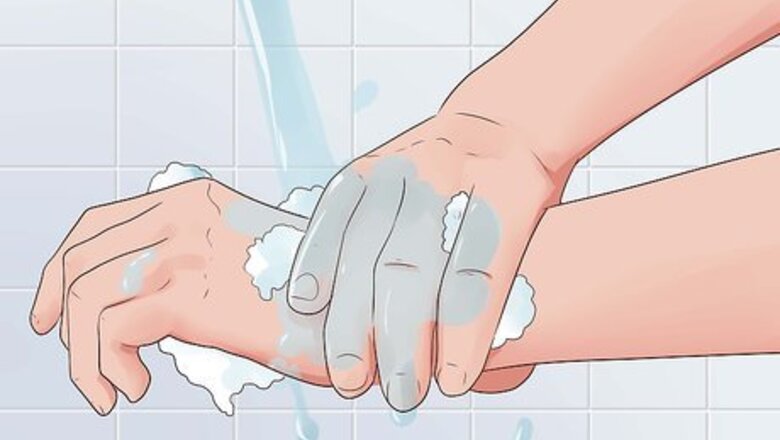
views
Checking for Increased Pain, Swelling, Redness or Warmth Around the Wound
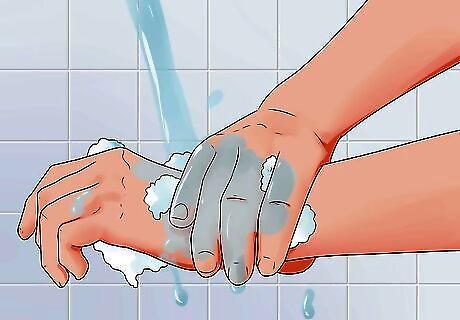
Wash your hands first. Before you inspect a wound you should always wash your hands thoroughly. If you are concerned about a wound being or becoming infected, poking around with dirty fingers could make the wound worse. Be sure to thoroughly clean your hands with an antibacterial soap and water before doing anything else. Remember to wash your hands after touching the wound.
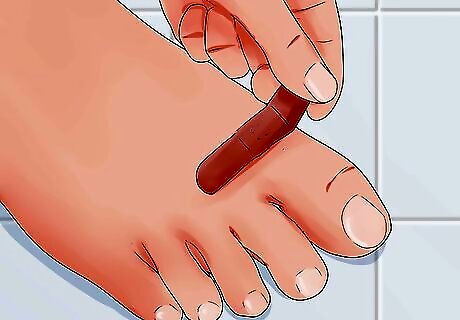
Examine the wound closely. You must remove any bandages from the wound you are inspecting. Do this carefully so you don't risk aggravating a sensitive area. If your bandage sticks to the wound, you can use running water to tease it off the wound. The water sprayer on a kitchen sink is helpful for this. Once you have taken off the soiled bandages, they should be discarded and thrown into the garbage. Never try to re-use a soiled bandage.
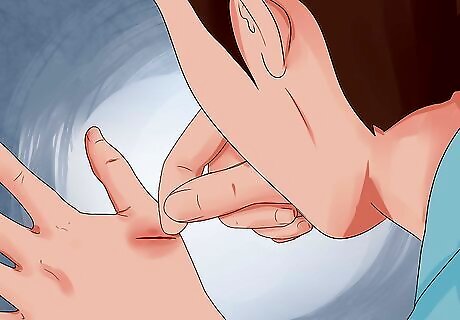
Look at your injury for redness or swelling. When you look at the wound think about whether it looks excessively red or if it has gotten redder than it was before. If the wound looks very red and the redness appears to be spreading out from the wound site, this is an indicator of infection. Your skin may also feel warm at the hurt area. Contact a doctor for advice if either of these symptoms are present.
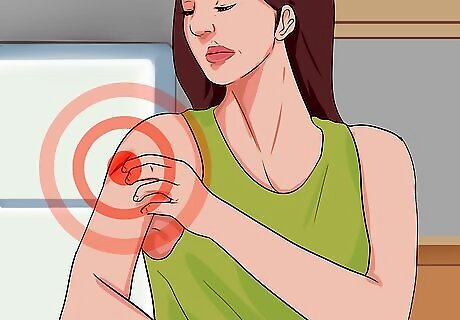
Ask yourself if the pain is getting worse. Feeling new or increasing pain is a symptom of an infected cut. Pain by itself or with other signs (such as swelling, heat, and pus) may indicate an infection is present. Consult a doctor if you notice growing pain at the site. The pain may feel like it is coming from deep within the wound. Generally, swelling of the affected area, heat/warmth and tenderness/pain are the best initial indicators that the wound may be infected. You might feel a throbbing pain. Itching is not necessarily a sign of infection, although you should never agitate a wound by scratching it a lot. Fingernails can carry more bacteria and scratching can make issues worse.
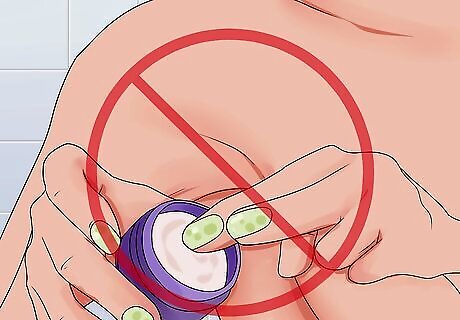
Don't apply an antibiotic unless recommended by your doctor. Studies haven't shown that antibiotic ointments significantly help a wound infection. An infection that has spread has also entered into your body, so treating the external wound after this has happened won't also treat the bacteria in your body. Your doctor may recommend antibiotic ointments if the infection is minor and superficial.
Checking for Pus and Fluid
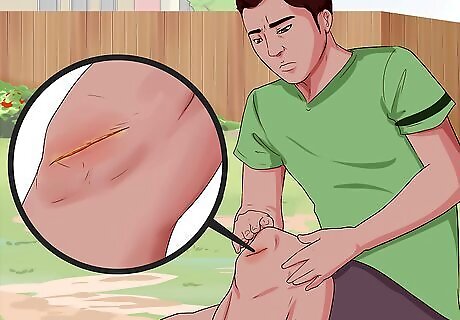
Observe the wound for yellowish or greenish pus or fluid. This discharge may also have a foul odour. If you see pus or a cloudy fluid, draining away from the wound this is a big indicator of an infection. You should get medical care as soon as possible. Some drainage from a wound is normal, as long as the fluid is thin and clear. Bacteria may create clear drainage that is not yellow or green. In this a case, your doctor may examine the fluid to determine a specific cause of infection.
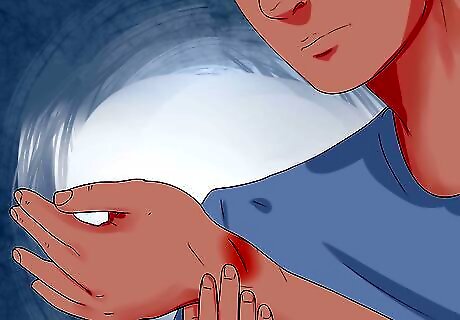
Look for a build-up of pus around the wound. If you notice pus forming beneath the skin, around the wound site, you may have an infection. Even if you can see a build-up of pus, or feel a tender, growing lump under the skin, but it is not leaking out of the wound, this can still be a sign of infection and should be taken seriously.
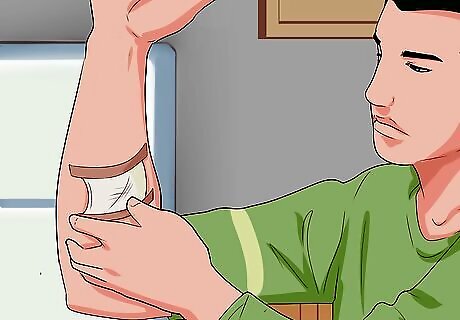
Replace the old bandage with a new sterile one after inspecting the injury. If there's no sign of infection, this will cover and protect the wound. If there are signs of infection, a sterile bandage will protect the wound from further contamination until you can see a doctor. Take care to only apply the nonstick part of the bandage to the actual wound. The bandage should be large enough to easily cover the wound.
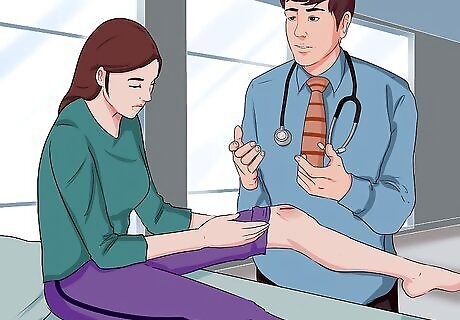
Consult a doctor if the wound continues leak pus. Some drainage may be normal from a wound as your body fights infection. But, if the pus becomes yellow or green and increases in amount (or refuses to subside), consider seeing your doctor. This is especially true if many previously discussed signs of infection are also present.
Checking for Infection of the Lymph System
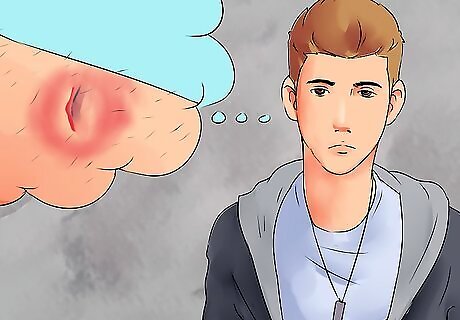
Examine the skin around the wound for red lines. You may notice these lines moving along the skin away from the injury. Red streaking of the skin around the wound can mean that an infection has spread into the system that drains fluids from tissues, which is called the lymph system. This kind of infection (lymphangitis) can be serious and you should get prompt medical attention if you see streaking redness from a wound site, especially if you are also experiencing a fever.
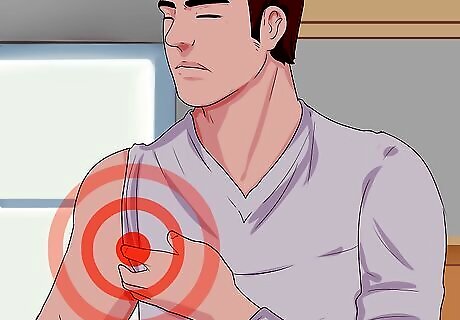
Locate the lymph nodes (glands) closest to your injury. The nearest lymph nodes for the arms are around your armpits; for the legs, it would be around your groin area. Elsewhere on the body, the closest ones to check would be the nodes on either side of your neck, just under your chin and jawbone on the left and right side. Bacteria is trapped in these glands during an immune response. Sometimes you can suffer infection to the lymph system without the streaking lines being visible on your skin.
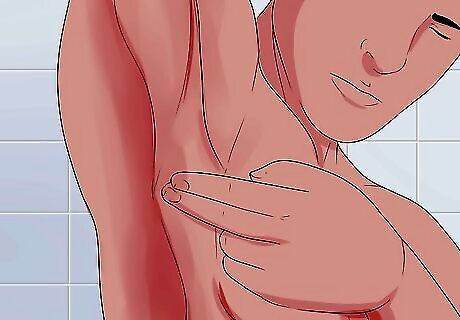
Check your lymph nodes for abnormalities. Use 2 or 3 fingers to apply gentle pressure and palpate the area for any enlarged lymph nodes, which may also be tender. A relatively easy way to find any abnormality is to use both hands to feel both sides simultaneously. Both sides should feel generally the same and symmetrical when healthy.
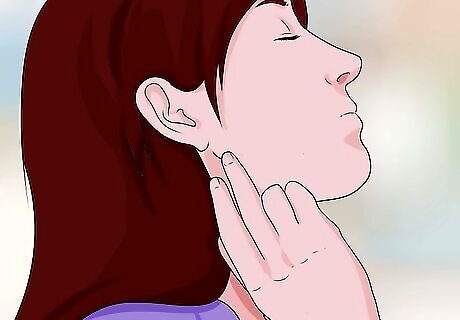
Feel the selected lymph nodes for swelling or tenderness. If you can feel either swelling or tenderness, this might be a sign of a spreading infection, even if streaking lines are not present. Your lymph nodes are normally only about a half-inch across and you shouldn’t be able to feel them. They can swell up to two or three times this size at which point you will be able to feel them clearly. Swollen lymph nodes that are softer and move easily usually signify infection or inflammation. Hard lymph nodes that don’t move, cause pain, or last more than 1 to 2 weeks should be examined by a doctor.
Checking your Temperature and General Feeling
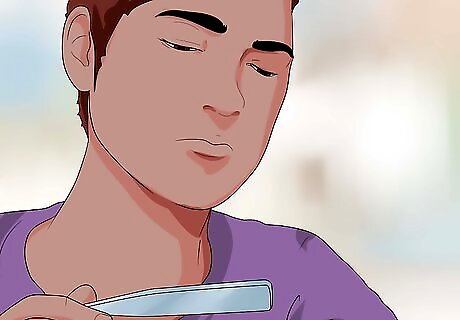
Take your temperature. Besides symptoms at the wound site, you may also run a fever. A temperature over 100.5 can indicate an infected wound. You should get medical attention when a fever accompanies one or more of the infection signs listed above.

Consider if you are feeling generally unwell. An indicator of an infection in a wound can be as simple as feeling under the weather (general malaise). If you have a wound and start feel sick a few days later, it could be correlated. Check your wound again for signs of infection and if you continue to feel unwell contact a medical professional. If you notice body aches, headache, dizziness, upset stomach, or even vomit, you may have an infection. A new rash is another reason to check with your doctor.
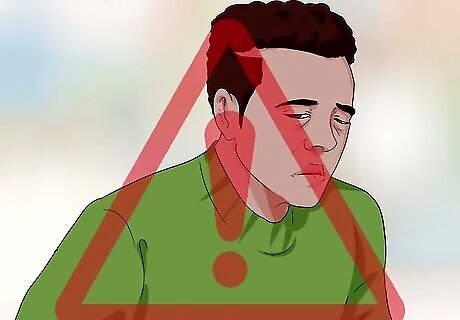
Be aware of your hydration levels. Being dehydrated could be indicator of an infected wound. Some of the main symptoms of dehydration include urinating less, having a dry mouth, sunken eyes, and dark urine. If you are experiencing these symptoms you should pay close attention to your wound, check it closely for the other signs of infection, and contact a doctor. Since your body is fighting infection, it is important to stay hydrated and drink plenty of fluids.
Handling a Severe Case

Know which types of wounds are prone to infection. Most wounds heal with little to no trouble. However, a wound is more likely to get infected if it has not been properly cleaned and treated. Cuts on the feet, the hands, and other areas that commonly come into contact with bacteria are also especially susceptible. Bite and scratch wounds inflicted by an animal or a human are also more likely to become infected. Keep a special eye on bites, puncture wounds, and crush injuries. Be careful when handling wounds from an unsanitary source: a crusty knife, a rusty nail, or a dirty tool. If you've been bitten, talk with your doctor about your risk of getting rabies or tetanus. You might need antibiotics, or vaccines or other treatments against tetanus or rabies. If you are healthy and your immune system is strong, most wounds will heal with little risk of infection. Your body's defenses have evolved to keep infections from taking root.

Understand other risk factors for infection. If your immune system is compromised by conditions like diabetes, HIV, or malnutrition, you are at a much higher risk of getting infected. Bacteria, viruses, and fungi that normally would not cause problems for the body’s immune system can infiltrate and multiply to distressing levels. This is especially true in severe 2nd- and 3rd-degree burn wounds, where the skin—your first line of physical defense—has been greatly compromised.
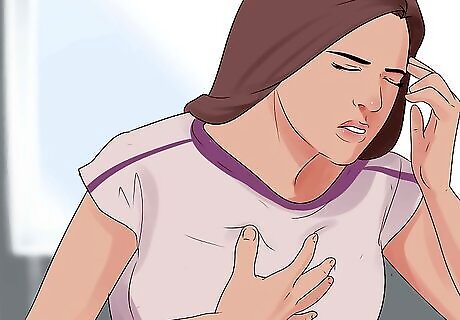
Notice the signs of a severe infection. You may have a fever, and you may feel dizzy. Your heart might be beating faster than usual. The wound will be warm, red, swollen, and painful. You may notice a foul odor, as of something rotting or decaying. All of these symptoms can manifest as mild or as very severe – but if you are experiencing several of them, you need to seek medical treatment. Do not drive if you're feeling dizzy and feverish. If possible, have a friend or family member drive you to the hospital. You may need to get some strong antibiotics to stabilize your system. When in doubt, get checked out. In the case of infection, it is not enough to merely self-diagnose using the Internet. A legitimate medical diagnosis is the best way to know for sure.
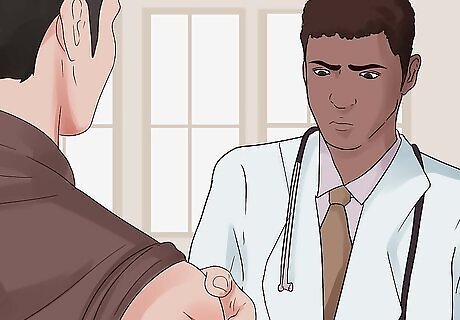
See a doctor. If you believe that your wound is getting infected, visit a medical clinic or make an urgent appointment to see your doctor. This is especially important if you have any other medical conditions, or if you meet any of the risk factors for infection.
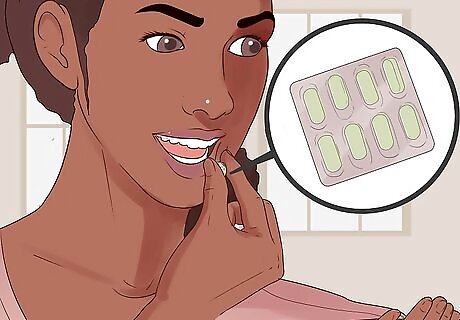
Consider taking antibiotics and NSAIDs. Antibiotics may help fight or prevent a bacterial infection, and they can be the most powerful way to knock out a roaring inflammation. NSAIDs will help your body recover from swelling, pain, and fever. You may be able to buy NSAIDs without a prescription, but most effective antibiotics will need a doctor's order. Avoid NSAIDs if you're using blood-thinning medication. Be aware that these drugs can cause stomach ulcers and kidney malfunction in some people. Ask your doctor!

















Comments
0 comment